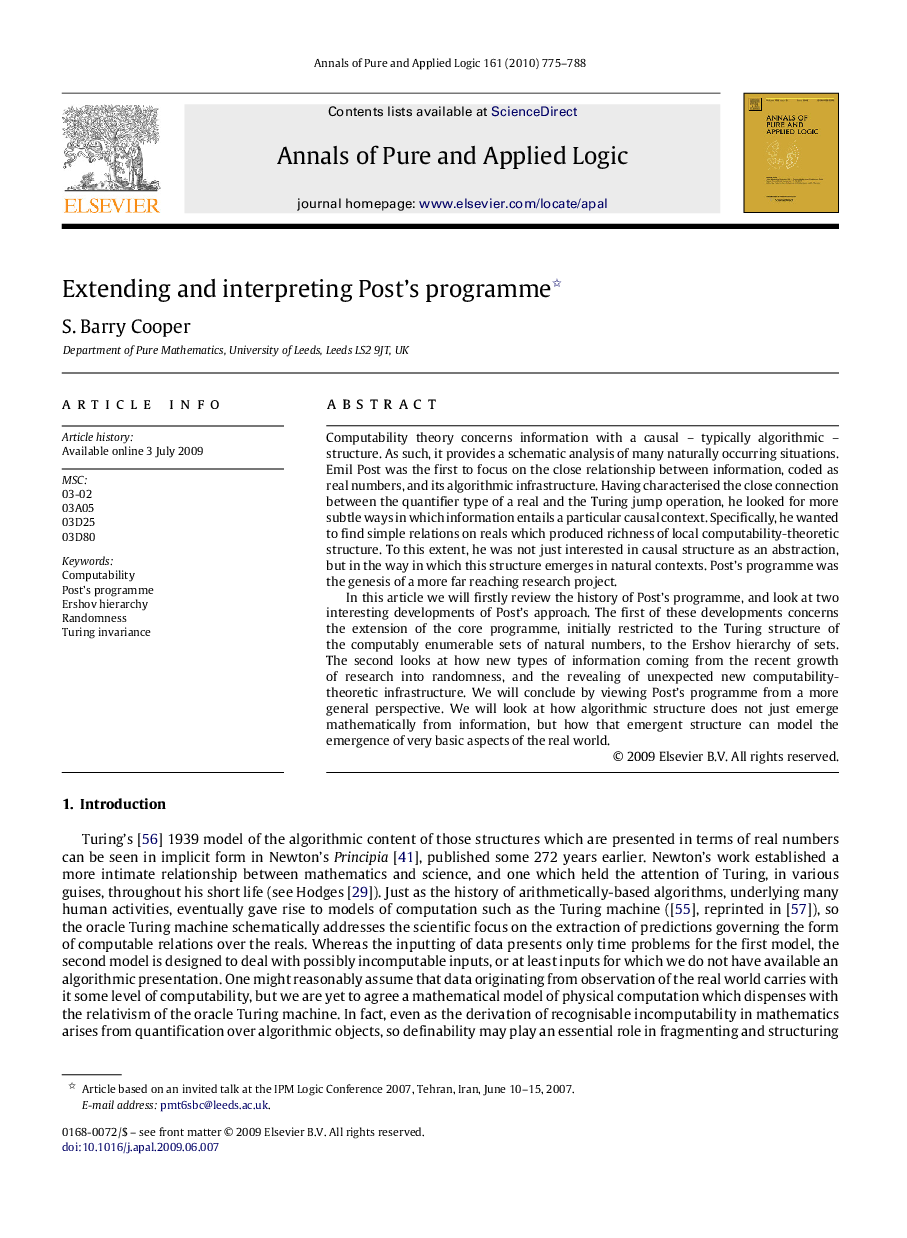| کد مقاله | کد نشریه | سال انتشار | مقاله انگلیسی | نسخه تمام متن |
|---|---|---|---|---|
| 4662095 | 1633510 | 2010 | 14 صفحه PDF | دانلود رایگان |

Computability theory concerns information with a causal–typically algorithmic–structure. As such, it provides a schematic analysis of many naturally occurring situations. Emil Post was the first to focus on the close relationship between information, coded as real numbers, and its algorithmic infrastructure. Having characterised the close connection between the quantifier type of a real and the Turing jump operation, he looked for more subtle ways in which information entails a particular causal context. Specifically, he wanted to find simple relations on reals which produced richness of local computability-theoretic structure. To this extent, he was not just interested in causal structure as an abstraction, but in the way in which this structure emerges in natural contexts. Post’s programme was the genesis of a more far reaching research project.In this article we will firstly review the history of Post’s programme, and look at two interesting developments of Post’s approach. The first of these developments concerns the extension of the core programme, initially restricted to the Turing structure of the computably enumerable sets of natural numbers, to the Ershov hierarchy of sets. The second looks at how new types of information coming from the recent growth of research into randomness, and the revealing of unexpected new computability-theoretic infrastructure. We will conclude by viewing Post’s programme from a more general perspective. We will look at how algorithmic structure does not just emerge mathematically from information, but how that emergent structure can model the emergence of very basic aspects of the real world.
Journal: Annals of Pure and Applied Logic - Volume 161, Issue 6, March 2010, Pages 775-788